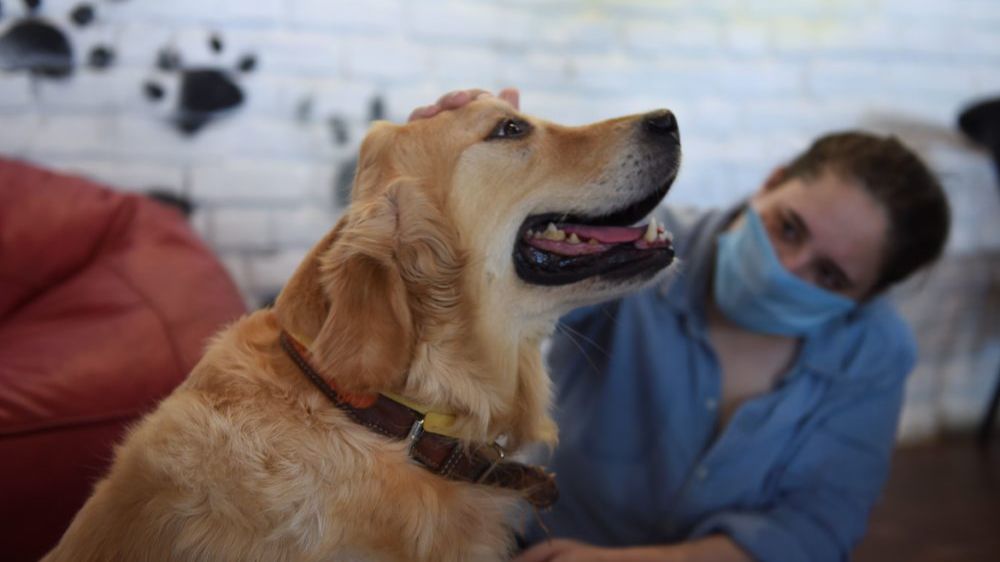Transporting pets internationally is a complex process that involves understanding various rules, regulations, and quarantine procedures. Whether you are relocating, traveling, or adopting a pet across borders, knowing what to expect and how to prepare your furry companion is crucial for their safety and well-being. In this article, we will provide a detailed guide on pet quarantine, the regulations surrounding pet transportation, and tips to ensure a smooth journey for both you and your pet.
1. What is Pet Quarantine?

Pet quarantine is a process in which pets are temporarily housed in a controlled facility to ensure they are free of contagious diseases or parasites that could pose a risk to other animals or humans. Quarantine periods vary depending on the country of origin, the pet’s health status, and the specific regulations of the destination country.
The goal of quarantine is not to punish the pet or the owner, but to protect public health and prevent the spread of zoonotic diseases (diseases that can be transmitted between animals and humans), such as rabies or avian influenza.
Pets can be quarantined either at a government-run facility or, in some cases, at home, depending on the regulations of the destination country.
2. Why is Quarantine Necessary?

There are several reasons why pet quarantine is a mandatory part of international pet travel:
- Prevent the Spread of Disease: Some countries, especially those that are rabies-free, require strict quarantine measures to prevent the entry of potentially harmful diseases that could affect local animals or humans.
- Verify Health and Documentation: During the quarantine process, authorities will verify that the pet’s vaccinations, health certificates, and other required documents are in order. This ensures that the pet is fit for travel and free from any infections.
- Ensure Animal Safety: Quarantine also provides an opportunity for veterinarians to check the pet for signs of stress or health issues that may have arisen during travel, and to address any concerns promptly.
3. Pet Quarantine Regulations: What You Need to Know

Each country has its own set of quarantine regulations, which can vary widely depending on the animal, the country of origin, and the destination country’s risk assessment. Below are general guidelines to follow and factors to consider when transporting your pet internationally:
A. Vaccinations and Health Certificates
Most countries require pets to be vaccinated against certain diseases, including rabies, before they can enter. In addition to rabies vaccination, some countries may require proof of vaccinations for diseases like distemper, hepatitis, and parvovirus (for dogs) or feline leukemia and calicivirus (for cats).
- Rabies Vaccination: The rabies vaccination is typically required at least 21 days before departure, as many countries will not allow entry unless the vaccination has been administered within the required time frame.
- Health Certificate: A licensed veterinarian must issue a health certificate stating that your pet is fit to travel and free of infectious diseases. The health certificate must be issued within a certain period before departure (usually 7-10 days), and it may need to be endorsed by government authorities, depending on the destination country.
B. Microchipping
Many countries require pets to be microchipped for identification purposes. The microchip must comply with ISO 11784/11785 standards, and it should be registered in your name and contact details. It is essential that the chip is scanned before departure and upon arrival to verify your pet’s identity.
C. Arrival Inspection and Quarantine Periods
When you arrive in the destination country, your pet will undergo an inspection at the airport or port of entry. If everything is in order—vaccinations, microchip, health certificate—the pet will be cleared for entry. However, if there are any discrepancies, or if the pet is arriving from a high-risk area for certain diseases, a quarantine period may be imposed.
- Quarantine Duration: The length of the quarantine can range from a few days to several months, depending on the regulations of the country you are entering and the health status of your pet. In many cases, pets may only need to quarantine for a few days while authorities verify their documentation and health status.
- Quarantine Facilities: Some countries offer home quarantine, where pets can stay at their owner’s residence as long as they meet certain conditions. In other cases, pets may need to stay in a government-approved quarantine facility, which could be a kennel or veterinary center. Facilities vary in terms of conditions, services, and costs, so it’s important to research your options in advance.
4. Pet Transportation Regulations

In addition to quarantine regulations, there are several other important rules and guidelines you must follow when transporting your pet internationally:
A. Airline Requirements
Different airlines have different policies for transporting pets. It’s important to check with your airline to confirm their pet transport rules, as well as specific requirements regarding:
- Pet Carrier Size: Most airlines require pets to travel in an airline-approved carrier that meets specific size, ventilation, and security standards. The carrier should allow your pet to stand, turn around, and lie down comfortably.
- In-Cabin vs. Cargo: Smaller pets may be allowed to travel in the cabin with you, while larger pets will need to travel in the cargo hold. Airlines have specific guidelines for both, so be sure to confirm the size and weight restrictions beforehand.
- Booking in Advance: Many airlines have limited space for pets on each flight, so it’s essential to book your pet’s travel as early as possible. This will ensure that they have a spot on your chosen flight.
B. Pet Passport
Many countries require a pet passport or travel certificate, especially within the European Union. The pet passport includes details about your pet’s vaccinations, health status, microchip number, and other important information. While a pet passport is not required for travel to all countries, it can streamline the process and make it easier to navigate customs and quarantine procedures.
C. Preparing Your Pet for Travel
Long flights and travel can be stressful for pets. Preparation is key to ensuring their comfort and safety. Here are a few tips for making the journey easier:
- Familiarize Your Pet with the Carrier: Allow your pet to get used to the carrier in the days leading up to the trip. This will help reduce anxiety during travel.
- Vet Check: Ensure that your pet is in good health before travel. Schedule a vet check-up to confirm they are fit to fly and that all vaccinations are up to date.
- Hydration and Comfort: Ensure your pet is hydrated during the flight, and include familiar items like a blanket or toy in their carrier to provide comfort.
- Avoid Feeding Before Travel: It’s generally recommended to avoid feeding your pet a large meal right before travel to prevent motion sickness.
5. What Happens After Quarantine?
Once your pet has completed their quarantine period (if applicable), they will be cleared for entry into your home country. If you used a quarantine facility, you will typically be notified when you can pick up your pet. If home quarantine was allowed, you will be required to monitor your pet’s health and ensure compliance with any local health guidelines.
Post-arrival, it’s advisable to schedule a visit to a local veterinarian to ensure your pet is adjusting well and remains in good health. The veterinarian can also provide advice on local environmental factors that may affect your pet’s well-being, such as climate changes or new diseases.
Conclusion
Pet quarantine and the regulations surrounding international pet transportation can seem overwhelming, but with the right preparation, you can ensure a smooth and safe journey for your pet. By understanding the requirements, working with a professional pet transport service, and following the necessary steps to comply with vaccination, documentation, and quarantine procedures, you can provide your furry companion with a stress-free experience while protecting them from potential health risks. Whether you’re traveling for work, relocating, or adopting a pet internationally, adhering to these guidelines will help your pet arrive safely and comfortably in their new home.
More posts you might be interested in:














